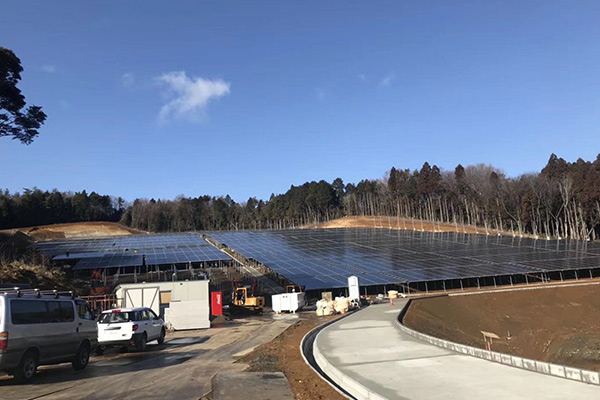In the pursuit of clean and renewable energy, solar power has emerged as a frontrunner. Among various solar installation options, flat roof solar panel mounting has gained significant popularity, especially in commercial buildings, apartment complexes, and even some residential homes.
Types of Mounting Systems
Ballasted Mounting Systems
Ballasted systems are a prevalent choice for flat roof solar installations. These systems rely on the use of heavy ballast, such as concrete blocks or gravel, to keep the solar panels firmly in place. One of the primary advantages of ballasted mounting is that it does not require any penetrations into the roof. This is particularly beneficial for roofs where maintaining waterproof integrity is crucial, as there is no risk of creating holes that could potentially lead to leaks. For example, in many commercial buildings with large flat roofs covered in materials like TPO (Thermoplastic Polyolefin), EPDM (Ethylene Propylene Diene Monomer), or modified bitumen, ballasted systems offer a safe and effective solution. The weight of the ballast is carefully calculated based on factors such as local wind conditions, building height, and roof edge distance to ensure that the panels can withstand strong winds. Standard ballasted flat roof systems are often wind load rated at 120 mph per ASCE 7 – 05 and can be engineered for even higher wind loads, up to 150 mph in some cases.
Penetrating Mounting Systems
Penetrating mounting systems, on the other hand, involve drilling holes into the roof to install the mounting racks. This approach provides a more secure and permanent solution for attaching solar panels. Once the holes are drilled, the mounting racks are firmly fastened to the roof structure. However, this method is not suitable for all flat roofs. Roofs with certain types of roofing materials that are prone to leaks, such as older or delicate membranes, may be damaged by the drilling process. Before opting for a penetrating mounting system, it is essential to check the compatibility of the roofing material and ensure that the roof can handle the penetrations without compromising its waterproofing capabilities. Despite this limitation, penetrating mounts can be more cost – effective than ballasted systems in some situations, especially when the roof structure is sturdy and can easily accommodate the penetrations.
Installation Considerations
Structural Integrity Assessment
Before any solar panel installation on a flat roof, a thorough assessment of the roof’s structural integrity is of utmost importance. This is true for both ballasted and penetrating mounting systems. For ballasted solutions, the added weight of the solar panels and the ballast needs to be carefully considered. The roof must be able to support this additional load without any risk of structural damage. In some cases, it may be necessary to consult a structural engineer to determine the roof’s load – bearing capacity accurately. The engineer will take into account factors such as the type of roof construction, the age of the building, and the existing condition of the roof. For penetrating mounts, although the load distribution may be different, the roof still needs to be structurally sound to withstand the forces exerted by the mounted solar panels. Any pre – existing structural issues, such as cracks or weak spots in the roof, should be identified and repaired before the installation process begins.
Optimizing Panel Tilt
Solar panels on flat roofs typically need to be tilted to an optimal angle to maximize energy production. The ideal tilt angle usually ranges between 10° and 30°, depending on various factors such as the geographical location of the building, seasonal variations, and the orientation of the roof. Adjustable tilt mounting systems are highly recommended for flat roof installations as they offer the flexibility to adjust the panel angle according to these factors. In regions closer to the equator, a shallower tilt angle may be sufficient to capture maximum sunlight, while in areas farther from the equator, a steeper tilt angle may be more beneficial. By optimizing the panel tilt, the solar panels can capture more sunlight throughout the day, leading to increased energy generation and a more efficient solar power system.
Proper Spacing and Layout
Adequate spacing between solar panels and the roof is crucial for ventilation and heat dissipation. Solar panels generate electricity through the conversion of sunlight, and during this process, they can heat up. If there is insufficient air circulation around the panels, overheating can occur, which can significantly reduce their efficiency. Therefore, it is important to ensure that there is enough space between the panels and the roof surface to allow for proper airflow. Additionally, when laying out the panels, considerations should also be given to accessibility for maintenance and cleaning. There should be enough space between rows of panels to enable easy access for workers to perform regular inspections, clean the panels, and carry out any necessary repairs. This not only helps to maintain the performance of the solar panels but also extends their lifespan.
In conclusion, flat roof solar panel mounting provides a practical and sustainable solution for harnessing solar energy. With the right choice of mounting system and careful installation considerations, flat roofs can be transformed into efficient solar power generators, contributing to a cleaner and more sustainable future.

